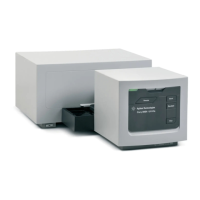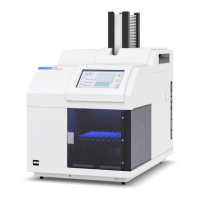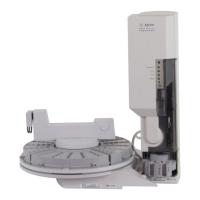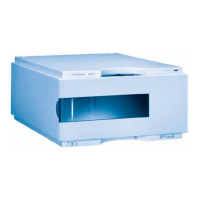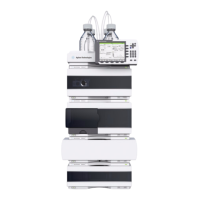Understanding Your Agilent ChemStation 83
Integration
4
Peak Recognition
When data is bunched, the data points are bunched as two raised to the
bunching power, i.e. unbunched = 1x, bunched once = 2x, bunched twice = 4x
etc.
Bunching is based on the data rate and the peak width. The integrator uses
these parameters to set the bunching factor to give the appropriate number of
data points Table 9 on page 83.
Bunching is performed in the powers of two based on the expected or
experienced peak width. The bunching algorithm is summarized in Table 9 on
page 83.
The Peak Recognition Algorithm
The integrator identifies the start of the peak with a baseline point
determined by the peak recognition algorithm. The peak recognition algorithm
first compares the outputs of the peak recognition filters with the value of the
initial slope sensitivity, to increase or decrease the up-slope accumulator. The
integrator declares the point at which the value of the up-slope accumulator is
≥15 the point that indicate that a peak has begun.
The peak recognition algorithm is shown in Figure 8 on page 84.
Table 9 Bunching Criteria
Expected Peak Width Filter(s) Used Bunching Done
0 - 10 data points First None
8 - 16 data points Second None
12 - 24 data points Third None
16 - 32 data points Second Once
24 - 48 data points Third Once
32 - 96 data points Third, second Twice
64 - 192 data points Third, second Three times

